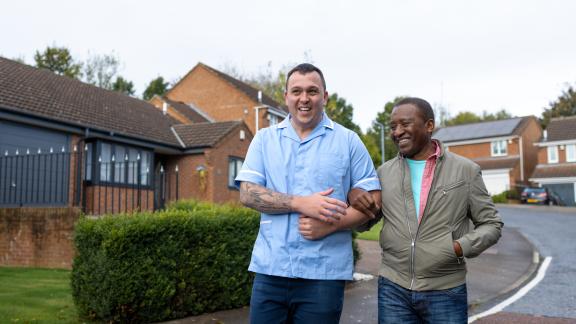Implementing a discharge hub: Sussex Community NHS Foundation Trust
What the organisation did
Working with local system partners, the trust implemented a multi-agency decision-making team and discharge hub in April/May 2020. Thanks to this discharge hub, the trust has seen significantly reduced delays to patients returning home once they are medically fit for discharge.
This hub built on work to pilot and develop discharge to assess approaches in community services over the previous two years.
There is one discharge hub at each of the three main acute hospital providers in the trust’s footprint, which covers the populations of West Sussex, Brighton and Hove, and High Weald Lewes Havens.
During this time, the trust also improved internal data management systems to ensure live data feeds from community intermediate care units to operational managers, which covered bed availability, acuity and patient flow. This operates across the trust’s ten intermediate care units, which have a total of 337 beds. The improved data flow supported rapid, accurate decision-making.
Results and benefits
Delayed discharges of medically fit patients from acute care have reduced by 85 per cent across the region. This has greatly improved the trust’s capacity to manage changing infection control practices.
Reduced time in acute hospitals is better for patients who would otherwise be at risk of deconditioning, and would more likely need longer-term care in the future.
The number of patients experiencing delays leaving community intermediate care units has also reduced by 60 per cent. This was enabled by the reduced assessment complexities in social care, NHS continuing healthcare services and self-funding arrangements, combined with better management of delays.
Length of stay in community intermediate care units has reduced from around 23 days to around 15 days, enabled by greatly improved productivity and efficiency.
More patients now receive care in their own home, or a permanent place of residence, which promotes their independence and improves their overall wellbeing.
Community services staff have responded well to the changes and the increased pace of decision-making. Decisions to accept the discharge are often made within 30 minutes of referral and discharges are commonly made in around three hours.
Challenges and lessons
The new pathways have been stress-tested and the systems and processes have coped well. Specifically, multi-agency collaboration and working without organisational boundaries have shown real potential for future development across the integrated care system.
Patient choice, especially for social care services, has been reduced to ensure accelerated patient flow along the pathways. This has increased complaints from some families and it will be important to understand the broader societal acceptance of this kind of practice at a national policy level.
Some soft reports are emerging of over-acceleration of discharges, which may have resulted in missed opportunities to drive better outcomes through increased rehabilitation. It is important to acknowledge the optimum length of stay may not always be the shortest.
Next steps
Resourcing has not grown at the rate of increased demand for community health services, nor in care home and home care placements. Current improvements have been enabled by the removal of budget constraints and redrawing of organisational boundaries during the pandemic, however consideration will be needed on how this continues when COVID-19 funding ends.
Connection of data flows across the system, between social care, community health services and hospital services, would support more enhanced multi-agency decision making.
Contact details for more information
Michelle Eades, Head of Strategic Development, Sussex Community NHS Foundation Trust
michelle.eades@nhs.net



